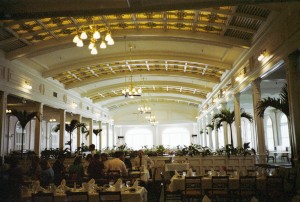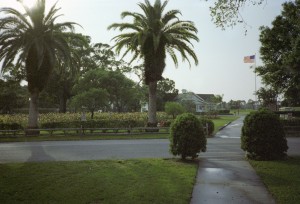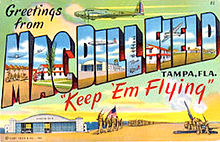Bumpy Landing
Theme Songs Page | Previous Theme Song | Next Theme Song
Bumpy Landing
Innuendo, by Michael Franks (1987)
Hear it on on Spotify | Buy it here | See it here | Lyrics here
Life’s major transitions are often messy. When (halfway between two marriages) I finally gave up playing the field, that was a major transition. And majorly messy.
Moments of Clarity
Neat would have been if I’d come to a clear-cut realization that carrying on multiple relationships was straining my integrity and imperiling my chances with Mary, the one I most cared for. Neat would have been a calm decision that therefore my wandering ways needed to stop.
Now, I did have such moments of clarity, lots of them, aided by predictable flashes of jealousy on both sides between Mary, my main girlfriend, and me. But I also had plenty of moments of the opposite sort of clarity: a clarity about the sexual freedom I’d be giving up and about my still-unsettled state (not yet being legally divorced, nor out of therapy, and certainly without a way of figuring out my long-term finances). A bit like Saint Augustine, I had always wanted an exclusive relationship; I just was having trouble deciding to have it quite yet.[1]
So the process was messy. Let us say bumpy. Surely the biggest bump came in the fall of 1985 when I tried swearing off the other relationships – and then panicked, and begged off the new arrangement for a while. Mary, who had by then moved to Charlottesville, forgave me, but it didn’t help matters between us.
Go to the Calendar
So things went on until the spring of 1986. I wish I could articulate more clearly how it was different this time from the way it had been a few months before, but I have no explanations. I can only tell the story, prompted by my calendar.
As the calendar reflects, in late April I went on my last real date with someone else. By my own choice I was already down to just one someone else, and she was the friend with benefits I’d described last time; we had no serious relationship. I guess I was no longer looking for anyone who could compete with what I was building with Mary – just someone who could delay it.
 Two days later, I was in Bellaire, Florida, at a national training session for new state humanities council members (I’d just joined Maryland’s). Mostly I was alone; that much I recall. I don’t remember much about the conference. Well, let’s be honest; I don’t remember anything about the conference. No doubt it was well-run and inspiring, and no doubt the company was pleasant. But nearly thirty years later, all of that is lost to my memory. What stands out – and stands out vividly – is the hotel itself, the Belleview Biltmore. Even in my contemporaneous snapshots, it is the hotel that matters, not the guests.
Two days later, I was in Bellaire, Florida, at a national training session for new state humanities council members (I’d just joined Maryland’s). Mostly I was alone; that much I recall. I don’t remember much about the conference. Well, let’s be honest; I don’t remember anything about the conference. No doubt it was well-run and inspiring, and no doubt the company was pleasant. But nearly thirty years later, all of that is lost to my memory. What stands out – and stands out vividly – is the hotel itself, the Belleview Biltmore. Even in my contemporaneous snapshots, it is the hotel that matters, not the guests.
 When we, the conferees arrived, being humanities people, we were briefed by someone about the history of the place. It had started out at the turn of the previous century as a place where rich folks could come down by train, park their private cars on a private siding, and golf amongst their peers. The grandee market having dried up considerably after the Great Crash, the hotel had had to cope, partly, as I learned, by becoming a defense asset during World War II.
When we, the conferees arrived, being humanities people, we were briefed by someone about the history of the place. It had started out at the turn of the previous century as a place where rich folks could come down by train, park their private cars on a private siding, and golf amongst their peers. The grandee market having dried up considerably after the Great Crash, the hotel had had to cope, partly, as I learned, by becoming a defense asset during World War II.
By sheerest coincidence, when I got there, I happened to be reading James Gould Cozzens’Guard of Honor (1948),[2] a tale of the races  and the sexes behind the lines in 1943, as the Army Air Corps geared up for combat. Much of the action there took place in a grand hotel called the Oleander Towers where officers attached to a nearby airfield and official visitors were billeted. The Biltmore’s guests, I learned, had been attached to nearby MacDill Airfield. And much of the description of the Oleander Towers fit the Biltmore: Cozzens’ wrote of “[t]he vast corridors, the old-fashioned lofty rooms with ceiling fans and slatted doors [that] were fairly cool. The high, screened balconies got some breeze … most nights.”)[3] And then I realized that the Cozzens’ hotel was on the Central Florida Gulf Coast as was the Biltmore. And you don’t have two places on that scale in proximity to each other. So I concluded the Biltmore had to be the model for the Oleander Towers! Suddenly, I could, in my mind’s eye, see men in uniform striding down the hallways “down on conferences, inspections, and junkets” – in Cozzens’ words, and maybe finding moments for romance, as one of his heroes sort of did.[4]
and the sexes behind the lines in 1943, as the Army Air Corps geared up for combat. Much of the action there took place in a grand hotel called the Oleander Towers where officers attached to a nearby airfield and official visitors were billeted. The Biltmore’s guests, I learned, had been attached to nearby MacDill Airfield. And much of the description of the Oleander Towers fit the Biltmore: Cozzens’ wrote of “[t]he vast corridors, the old-fashioned lofty rooms with ceiling fans and slatted doors [that] were fairly cool. The high, screened balconies got some breeze … most nights.”)[3] And then I realized that the Cozzens’ hotel was on the Central Florida Gulf Coast as was the Biltmore. And you don’t have two places on that scale in proximity to each other. So I concluded the Biltmore had to be the model for the Oleander Towers! Suddenly, I could, in my mind’s eye, see men in uniform striding down the hallways “down on conferences, inspections, and junkets” – in Cozzens’ words, and maybe finding moments for romance, as one of his heroes sort of did.[4]
Hence it was, I felt, a hotel that had seen everything,[5] and if I could only be attentive in the presence of that mute historical omniscience, somehow I would receive some sort of wisdom.
A Sunset to Share
 What I came away with was more a feeling than a thought: a dissatisfaction with aloneness. I suspect from some scanty evidence, and again I’m revealing how messy it all was, that on the Monday night, I had a flirtatious dinner that led nowhere with someone whom I know now merely by recorded initials (the name is gone from memory). I know that after that inconclusive dinner I caught a shuttle out to Clearwater Beach, to catch the celebrated sight of the sun setting over the Gulf of Mexico from the fishing pier there. Seeing it made me wish I could share that prospect with Mary, but I had forgotten my camera. (Fortunately, fate brought me back to the area almost exactly a year later, and that time I captured images of the sunset that had eluded me the preceding year.)
What I came away with was more a feeling than a thought: a dissatisfaction with aloneness. I suspect from some scanty evidence, and again I’m revealing how messy it all was, that on the Monday night, I had a flirtatious dinner that led nowhere with someone whom I know now merely by recorded initials (the name is gone from memory). I know that after that inconclusive dinner I caught a shuttle out to Clearwater Beach, to catch the celebrated sight of the sun setting over the Gulf of Mexico from the fishing pier there. Seeing it made me wish I could share that prospect with Mary, but I had forgotten my camera. (Fortunately, fate brought me back to the area almost exactly a year later, and that time I captured images of the sunset that had eluded me the preceding year.)
I am certain I came away leaning toward the view that it was time to bring this stage of my life to a close. But I wasn’t quite there even then. Perhaps my mind was really made up two weeks later, at a group therapy session. The other members of the group did not think highly of my inconstancy, to put it mildly. One of the female members told me, in a voice that one uses to explain the obvious to a thick child, that ordinarily you put in some time being monogamous with anyone you’re thinking about marrying.
Or perhaps the final turning point came the following weekend when I flew back to my hometown of Ann Arbor for a party honoring my stepdad on his retirement. I spent more time alone there, walking around, photographing my old haunts, thinking, for some reason, about being honest with my kids. Although it was no doubt a trifle optimistic to think they would be interested in their father’s early years, I wanted there to be a record, an honest record, a clear and admirable one. And I knew (if only from the Group’s commentary) that there wasn’t much admiration for my extant way of life from those who knew the most about it.
Making a Break
And so I came to Friday, May 16. Early that evening, I got together again with my friend with benefits, and over drinks, looking across the room at a second-floor window revealing the fading light in an Inner Harbor neighborhood, I told her I’d decided I only wanted to see one woman now. Don’t even worry about it, my friend said. I still want to be friends, I said, and she agreed. (An agreement we kept.) We talked for an hour, we hugged goodbye, and I went home.
Not much later, Mary arrived from Virginia, and I told her I was through with everyone else. She asked me if I was serious this time, and I told her I was. I had a hollow feeling, still, though. I’d had warm feelings for the friend I’d just broken up with. But I kept it to myself.
The following evening, the two of us went to a “hat party” given by a friend – everyone had to wear a lid, don’t ask me why. Two of the guests there were women I had been with. There might have been a day, and not long before either, that I would have exulted in that secret evidence of my prowess and attractiveness. Now I felt bad because the two other women had information Mary didn’t (and, consistent with the rules Mary and I had laid down to avoid jealousy, I had not told her). I found I had stopped wanting the thrill of secret information. I was now ready for a regime of straightforward disclosure. And I felt a strong sense of relief that I would not be adding anything more to that pile of secrets. It could well be that that moment, not the isolation at the grand hotel nor the critique from the therapy group nor the introspection in my hometown nor the goodbye to the friend nor the announcement to Mary, was the real point of decision. There’s no way of really saying.
Wherever it had exactly happened, though, I felt as if the train of my life had gone over a switch somewhere. I might still be running parallel to most of my old ways, but I was headed for a different destination.
The Dialogue More Real
The song that I hear when I think about that part of my life is actually from the following year, 1987, Michael Franks’ Innuendo. The story the song tells bears some resemblance to the transition I was making. It concerns two former lovers coming back together, going on a date after a year off in which he’s had “a few stolen kisses and several near misses” – presumably with others. He’s nervous adjusting his tie in the mirror, before going out to re-encounter The One.
The bravado’s just pretend-o. And the chic spot where we meet Is called Innuendo.But as they talk, as “their salads are dressing,” along comes Cupid with his arrow, and though they each dissimulate a bit by resorting to innuendo rather than direct talk, eventually they finish the meal and go home together.
And this happiness we feel As we move to the crescendo Makes the dialogue more real, Not just innuendo. No more innuendo…So this song is about a second try at a relationship, the success of which is marked by the “dialogue” becoming “more real.” That’s the big similarity. The musical setting might seem distinctly less of a fit. It is lovely and placid, built around the smooth jazz guitar of Earl Klugh, who could noodle as smoothly as any guitarist in that era. And if I’ve made anything clear above, it’s that there was nothing smooth about the process of getting to this point. But as I say, this record actually came out in 1987, a year after the bumpy landing, a happy year, as it turned out. No buyer’s regrets this time. The smoothness of the year somehow worked backwards to make the bumpiness less bumpy in retrospect. So to me the song was a perfect fit.
[1] “But I wretched, most wretched, in the very commencement of my early youth, had begged chastity of Thee, and said, ‘Give me chastity and continency, only not yet.’” Confessions, Book VIII.
[2] The book was awarded the Pulitzer Prize, but I doubt there are many readers it would appeal to today. The main action has to do with frictions between black and white units in the Air Force, in which Cozzens seems to be far more critical of blacks and integrationists than of the bigots and the careerists who buckle under to the bigots. (There is also textual support for the opposite point of view, though, which is one of the reasons the book is notorious for its impenetrability.) However, if, like me, you’re a sucker for World War II fiction, this is one you must try sooner or later.
[3] Described at Pages 48-49 in the original edition. That description says the fictional hotel, had “Moorish … features” with “features of other Oriental styles,” and that one wing had burned down in the 1890s. But everything else seemed to match up.
[4] “Had there been no war” Cozzens wrote, “the winter of 1942-43 would probably have seen the Oleander Towers closed and perhaps torn down. Instead, by the summer of 1943, it was doing a business not known there since 1900. Its guests were almost entirely officers stationed at Ocanara [Airfield]…”. According to the Wikipedia article on the Belleview Biltmore: “During World War II, the hotel served as lodging for servicemen who were stationed at MacDill Air Force Base in Tampa.” Ocanara is as fictive a name as Oleander Towers. (There is a high-rise apartment house by that name in Singapore, but that is not the setting of Guard of Honor.) So I take the airfield Cozzens called Ocanara as MacDill. All that said, I must acknowledge that Matthew J. Bruccoli’s standard biography of Cozzens, James Gould Cozzens: A Life Apart (1983), seems to catalogue all the many varied Army Air Force locations Cozzens visited during his tour of duty, and nowhere does MacDill appear on the manifest. It may conceivably be that the real model for Ocanara Towers was the Greenbriar Hotel in Miami Beach, where Cozzens went to AAF Officer School. (The Greenbriar was apparently a casualty of Hurricane Wilma.) Cozzens also spent time at the AAF airfield in Orlando, which was in Central Florida like the Oleander Towers, but he lived in a rented house while he was there. I am thus compelled to acknowledge the possibility that the Oleander Towers is a composite of various hotels the peripatetic Cozzens visited in the line of his AAF duties. However, Cozzens freely owned up to the fact that, at least when it came to characters, he inserted real people. The Oleander Towers is as much of a character as any of the humans depicted. I would therefore assume at a bare minimum that, to the extent he included MacDill in the basis for the fictional world he was creating, the Belleview Biltmore was on Cozzens’ mind. Regardless, that was certainly what I thought while I was visiting there.
“Had there been no war” Cozzens wrote, “the winter of 1942-43 would probably have seen the Oleander Towers closed and perhaps torn down. Instead, by the summer of 1943, it was doing a business not known there since 1900. Its guests were almost entirely officers stationed at Ocanara [Airfield]…”. According to the Wikipedia article on the Belleview Biltmore: “During World War II, the hotel served as lodging for servicemen who were stationed at MacDill Air Force Base in Tampa.” Ocanara is as fictive a name as Oleander Towers. (There is a high-rise apartment house by that name in Singapore, but that is not the setting of Guard of Honor.) So I take the airfield Cozzens called Ocanara as MacDill. All that said, I must acknowledge that Matthew J. Bruccoli’s standard biography of Cozzens, James Gould Cozzens: A Life Apart (1983), seems to catalogue all the many varied Army Air Force locations Cozzens visited during his tour of duty, and nowhere does MacDill appear on the manifest. It may conceivably be that the real model for Ocanara Towers was the Greenbriar Hotel in Miami Beach, where Cozzens went to AAF Officer School. (The Greenbriar was apparently a casualty of Hurricane Wilma.) Cozzens also spent time at the AAF airfield in Orlando, which was in Central Florida like the Oleander Towers, but he lived in a rented house while he was there. I am thus compelled to acknowledge the possibility that the Oleander Towers is a composite of various hotels the peripatetic Cozzens visited in the line of his AAF duties. However, Cozzens freely owned up to the fact that, at least when it came to characters, he inserted real people. The Oleander Towers is as much of a character as any of the humans depicted. I would therefore assume at a bare minimum that, to the extent he included MacDill in the basis for the fictional world he was creating, the Belleview Biltmore was on Cozzens’ mind. Regardless, that was certainly what I thought while I was visiting there.
[5] As of this writing, the hotel is shuttered, and there have on more than one occasion been plans to tear it down. However, the latest ownership of which I am aware has publicly stated that it plans to restore the hotel. I hope that happens.
Copyright (c) Jack L. B. Gohn except for cover art and postcard
